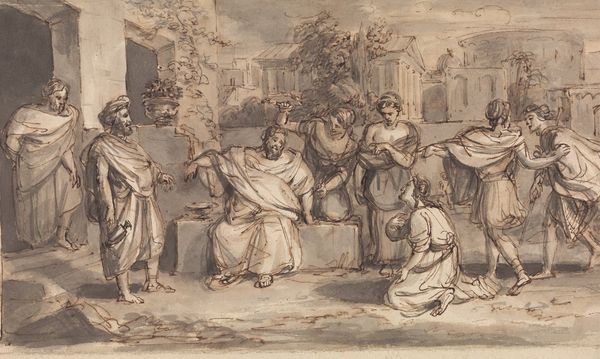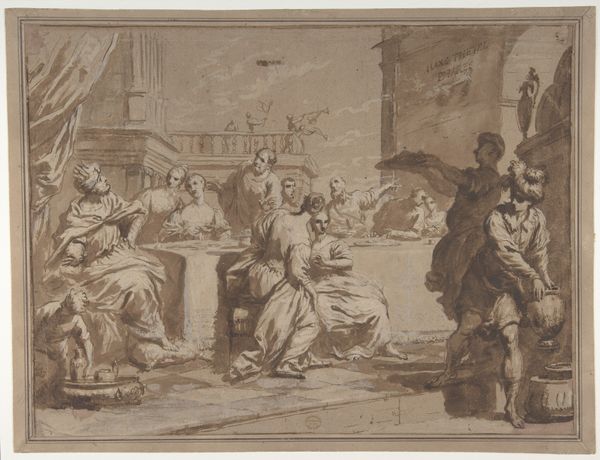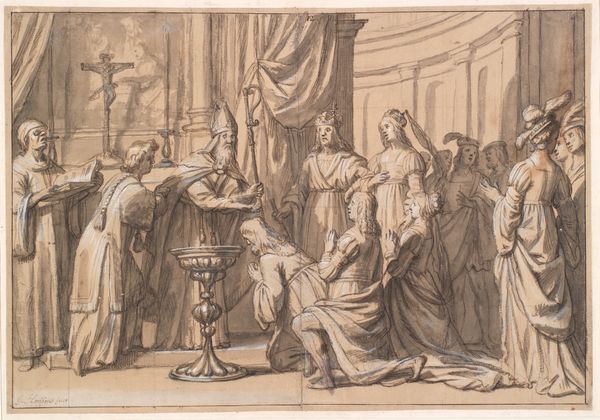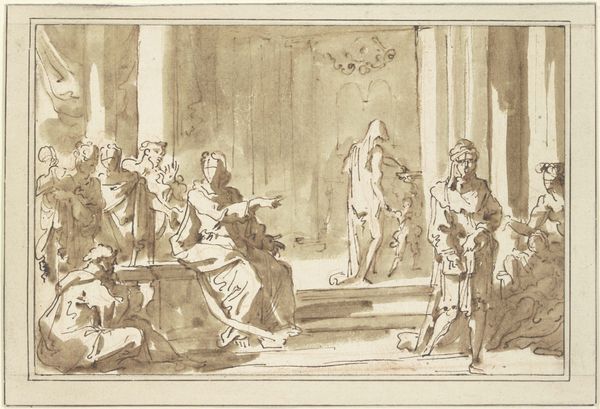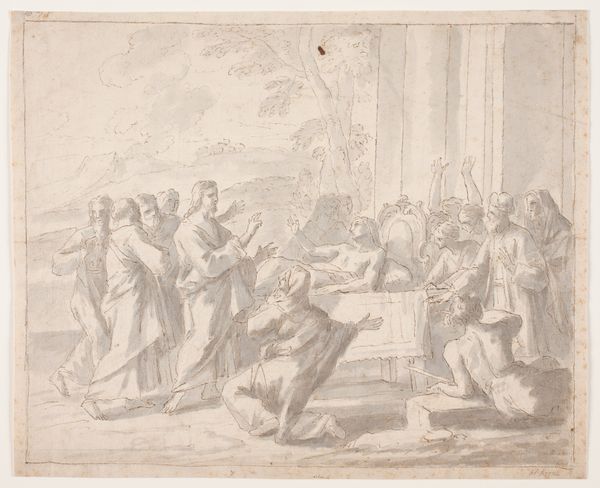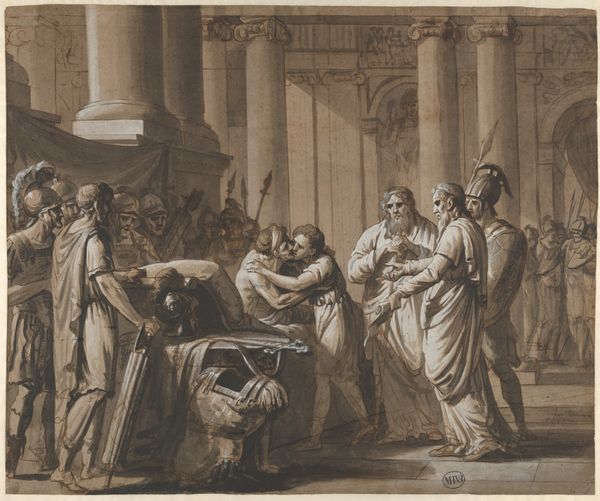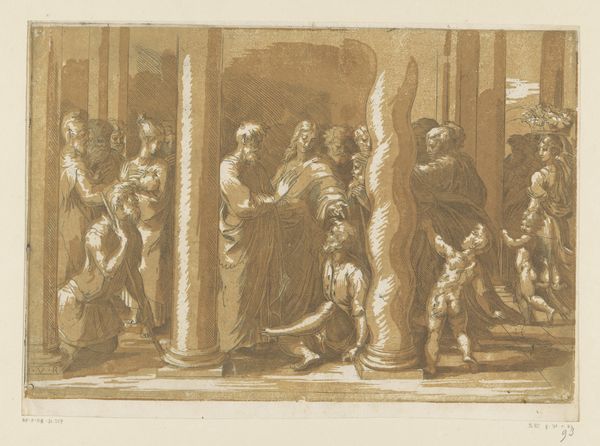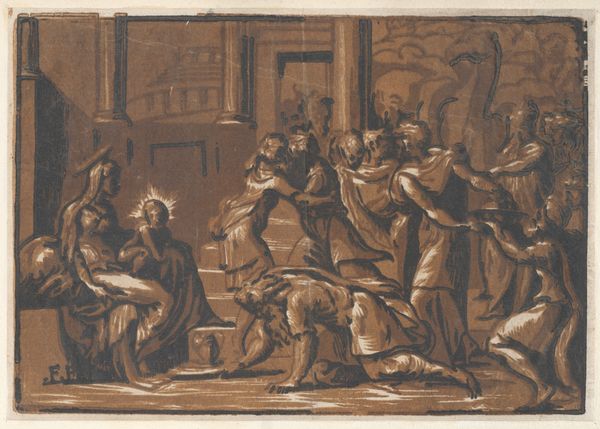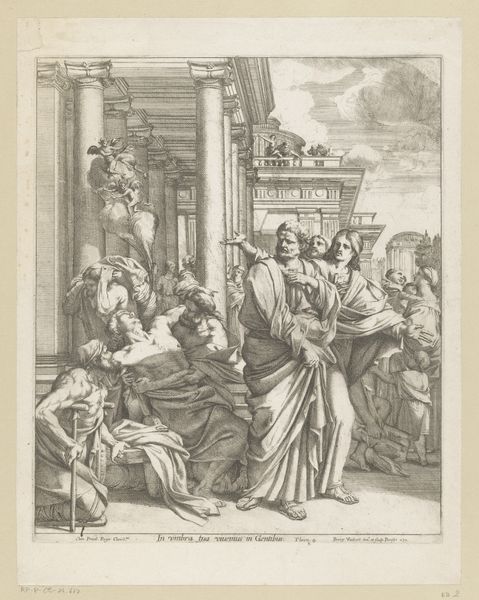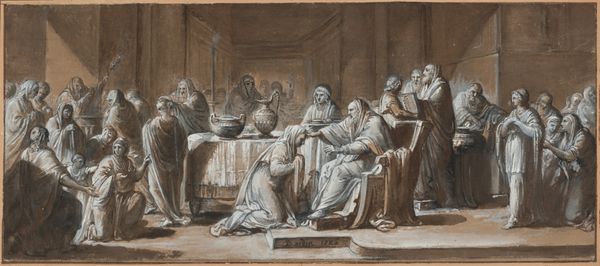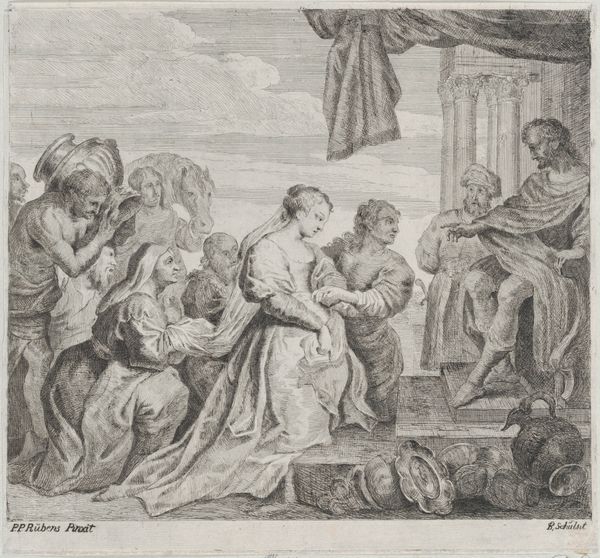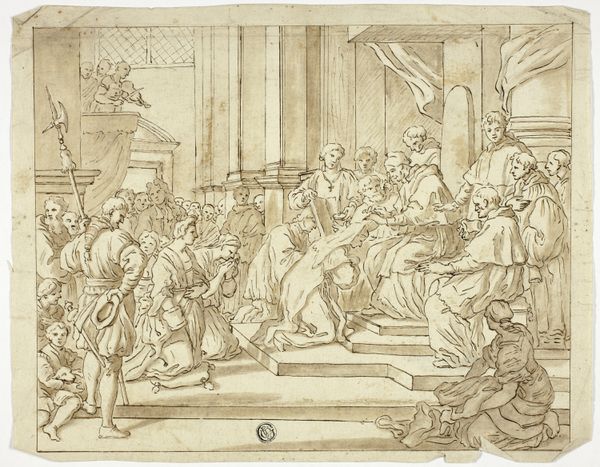
drawing, print
#
drawing
#
toned paper
#
light pencil work
# print
#
pencil sketch
#
charcoal drawing
#
charcoal art
#
coffee painting
#
underpainting
#
men
#
portrait drawing
#
watercolour illustration
#
watercolor
Dimensions: 14 x 20 3/4 in. (35.6 x 52.7 cm)
Copyright: Public Domain
Editor: This drawing, "The Death of Britannicus," by Alexandre Denis Abel de Pujol, completed between 1809 and 1819, uses watercolor and pencil on toned paper to depict a dramatic scene. The sepia tones lend a classical feel, but the expressions are intensely emotional. What strikes you most about the means of production in relation to the artwork’s historical context? Curator: The choice of materials speaks volumes. The use of readily available, relatively inexpensive materials like pencil and watercolor suggests this was perhaps a preparatory sketch or a work intended for a different kind of audience than a large oil painting would have been. Consider how the toned paper allows for the artist to build up light and shadow with speed and efficiency, streamlining the labour. How do you think the production cost and artistic accessibility impact our understanding of the final piece? Editor: I guess using these specific materials makes it feel more immediate, more like a glimpse into a process, rather than a finished statement of wealth or power. It brings me closer to the story. Is this something people at the time were considering too, that art can be created by and be accessible for the people? Curator: Exactly. Think about the rise of printmaking during this period. It enabled wider distribution of images and ideas, and shifted the relationship between artist, artwork, and the public. By choosing accessible materials and techniques, de Pujol participates in a broader trend of democratizing art, making these dramatic scenes relatable across social strata. Do you believe his intent impacts our emotional experience while viewing it? Editor: That's a fascinating perspective. I hadn't thought about the economic and social implications of the medium itself. It really opens up another layer of understanding to see how materials can tell a story alongside the subject matter. Curator: Indeed. Looking closely at art means examining not just what is depicted but also how and why it was made. It allows us to understand a lot of information about its period. Editor: It is like seeing this drawing through a completely new lens; understanding its materiality helps see the broader social context that influenced its creation and reception.
Comments
No comments
Be the first to comment and join the conversation on the ultimate creative platform.

